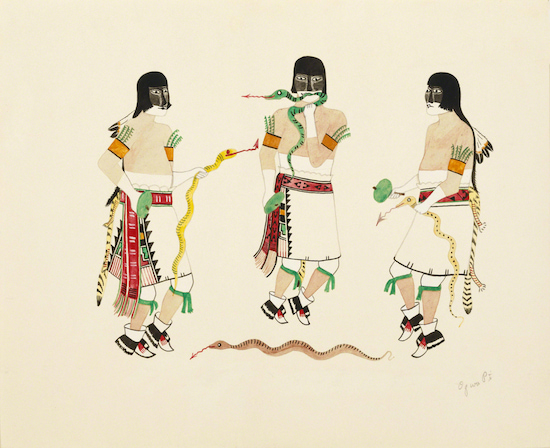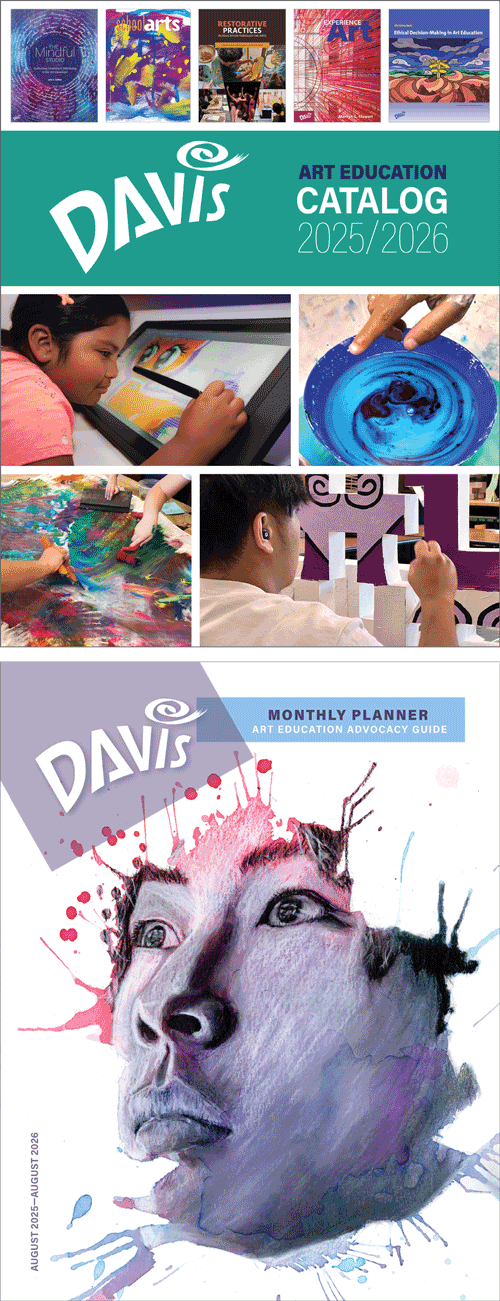Artist Birthday: Oqwa Pi
Oqwa Pi, whose name translates as Katsina Stick, was part of a generation of Native American artists who attended the Santa Fe Indian School, and took painting classes in The Studio. The school was an effort to bring Western painting, drawing, and printmaking skills to Native American artists.
Artist Birthday for 1 August: Oqwa Pi (Abel Sanchez, 1899–1971, San Ildefonso Pueblo, New Mexico)
 |
| Oqwa Pi, Snake Dance, 1920–1935. Tempera on wove paper, 28.6 x 36 cm. Museum of Fine Arts, Houston. © 2025 Artist or Estate of Artist (MFH-814). |
Abel Sanchez had little to no art training outside a few classes he took at the Studio School in the 1920s. He was subsequently commissioned to paint murals there during the Depression (1929-1940). A farmer, born in San Ildefonso Pueblo, New Mexico, Sanchez saw the heightened interest in "native arts" during the early 1900s as a way to earn a good living for his family. He was highly esteemed at San Ildefonso and was elected governor of the pueblo six times.
The Snake Dance is a Pueblo ceremony in which the dancers bear snakes in their mouths and then release them to transmit prayers to the spirit world to ensure good rainfall and crops. These figures Sanchez based on katsina sculptures of the dancers. Lightning and snakes both reference the spirit world. The zig-zag pattern down the dancers' kilts symbolizes lightning.
The snake that has been released ironically forms a groundline for the dancers, whereas Sanchez's paintings typically depict no ground line, background or foreground. The artist's figures are typically flat, with no shading to indicate volume, much like "ledger book" images of First Nations people from Plains Indians. The heads of Sanchez's figures are typically out of proportion with the bodies.
The Pueblo and Navajo cultures of the Southwest did not have a tradition of pictorial narrative art. However, during the first two decades of the 1900s, there was a concerted effort by well-meaning anthropologists and intellectuals to begin such a tradition for them. These thinkers believed that many traditions of First Nations life were vanishing and needed to be documented in pictorial form. Initially works were commissioned from several Hopi men for display outside the community starting in 1899. A few years later several other Pueblo artists began making paintings for sale to outsiders. By the late 1920s, many Pueblo artists were experimenting with painting and drawing scenes of traditional Pueblo life.
The pictorial movement got its greatest impetus from the establishment of a formal painting program at the Santa Fe Indian School in 1932. Non-native teacher Dorothy Dunn (1903–1991) established The Studio, a painting program for high school-aged students. Dunn did not teach Western painting concepts such as perspective, plasticity or composition, insisting that the students rely on traditional art of Pueblo cultures. The Studio School ultimately was characterized by a flat, stencil-like style with minimal backgrounds that stressed subject matter.
Correlations to Davis programs: Explorations in Art 2E, 6th Grade, 6.9; A Personal Journey 2E, 2.4; Davis Collections -- First Nations Art, US and Canada)

Comments